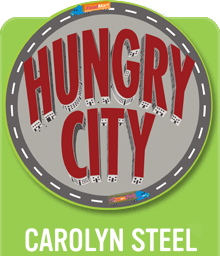The Thames Gateway
The Thames Gateway, billed by the government as ‘the UK’s largest regeneration project’ and its ‘first ever eco-region’, is in a mess. Conceived by Terry Farrell in the white heat of the property boom, the masterplan was supposed to turn this pock-marked semi-industrial landscape into a blossoming ‘eco-region’ of wetlands, parklands, and160,000 new homes by 2016. But, according to the Gateway’s development chief Peter Andrews, the mechanism expected to deliver that fairytale transformation is ‘effectively broken with no apparent replacement’.
The problem, as spelt out by Andrews in his recent evidence to the All Party Urban Development Group (APUDP), is that the vision never had any serious economic backing. Instead, it was expected to piggy-back on London’s seemingly unstoppable ‘growth’ as the star at the core of an ever-expanding economy. But now that the star has become a black hole, its local galaxy is no longer expanding. According to Mr. Andrews, the only projects now under construction in the region are those initiated before the autumn of 2007, or those supported by the public sector. Since that date, just six projects have gone on site, capable of delivering just1,800 new homes between them.
So far, so doomy and gloomy. But could it be that this unforeseen hitch in proceedings is actually a blessing in disguise? A moment to reflect what the APUDP really means when it states its mission is to ‘conduct a holistic review of all the constituent elements that combine to create genuinely sustainable communities’?
The Thames Gateway, after all, is ‘gateway’ to London, currently one of the least sustainable communities on the planet. In this context, calling the capital’s fluvial hinterland an ‘eco-region’ seems a bit of a stretch. Creating a few parks and ‘ducklands’ to absorb the inevitable flooding that will hit the region due to global warming, does little to alleviate the effects of the vast, pullulating metropolis just a few miles upriver. Surely a more ‘sustainable’ approach to London’s gateway would be to acknowledge its ancillary role as neighbour to the biggest, baddest city in Europe and address some of the latter’s more genuinely unsustainable practices?
Here’s an idea. Plans for the Gateway have stalled because people have stopped paying ridiculous prices for houses. But Londoners still need to eat. So, rather than wait to build more dormitory towns at the edge of an already bloated, non-productive metropolis, why not grow food for it instead? Not just on the odd token site for a few years, but all over the region, long-term, on a commercially viable scale? Stop flogging publicly-owned land to developers so that they can sit on it until it becomes profitable again, and make the land available at token rents to anyone who wants to farm it? Generate jobs for local people growing, harvesting, packing and cooking food, and sailing it upriver to sell at markets along the Embankment? Use the city’s sewage to fertilise the soil? Return the Thames Gateway, in fact, to what it was for centuries: London’s market garden and breadbasket? That way, the region could become an exemplar, not of urban renewal, but of rural, making London a model of post-industrial sustainability in the process. Just a thought.











Leave a Comment